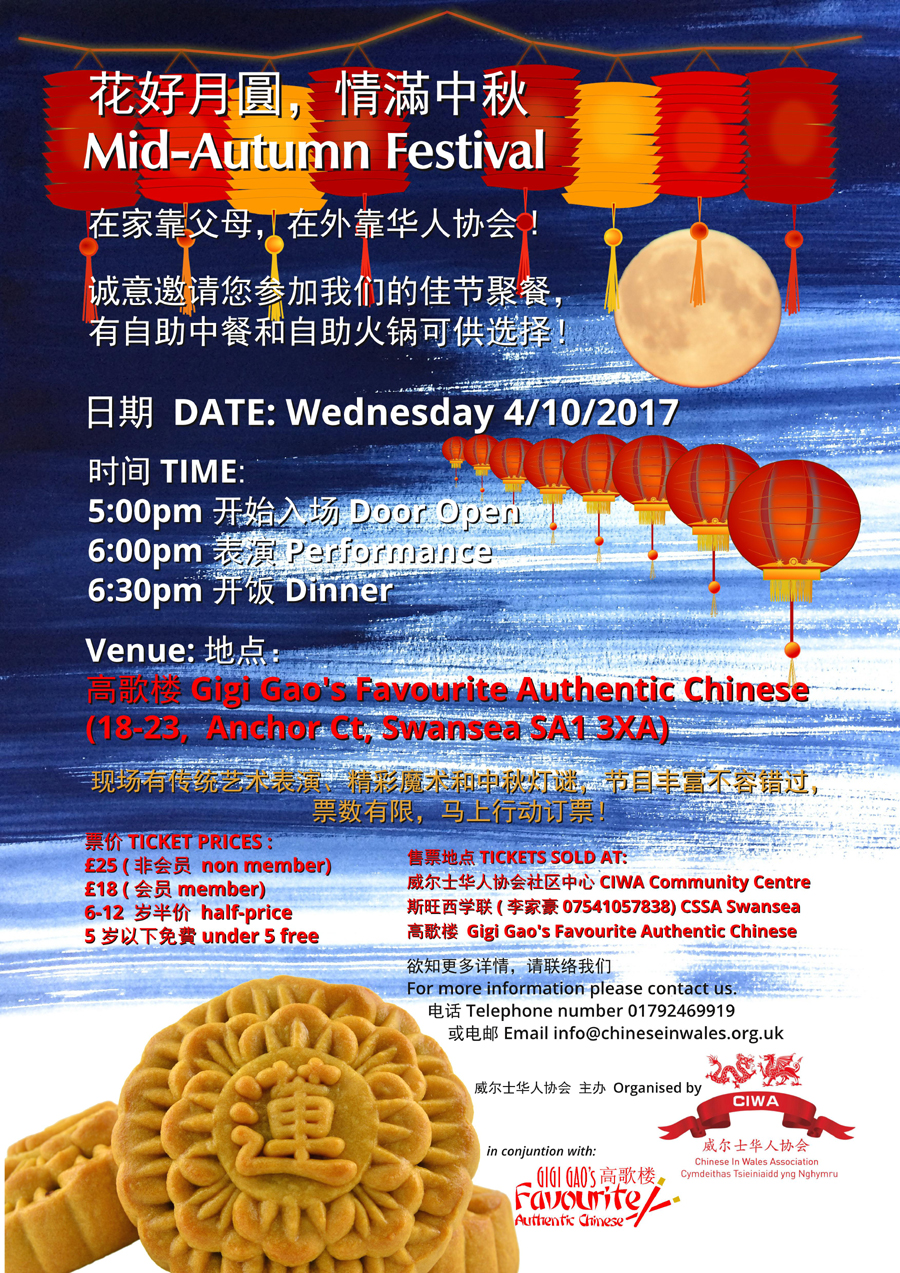
- #Earliest origin of midautumn festival how to#
- #Earliest origin of midautumn festival full#
- #Earliest origin of midautumn festival plus#
All family members try to get together on this special day.
#Earliest origin of midautumn festival full#
Because the full moon is round and symbolizes reunion, the Mid-Autumn Festival is also known as the festival of reunion. Nowadays, there are hundreds varieties of moon cakes on sale a month before the arrival of Moon Festival.į or thousands of years, the Chinese people have related the vicissitudes of life to changes of the moon as it waxes and wanes joy and sorrow, parting and reunion. People compare moon cakes to the plum pudding and fruit cakes which are served in the English holiday seasons. Sometimes a cooked egg yolk can be found in the middle of the rich tasting dessert. Today, moon cakes are eaten to commemorate this legend and was called the Moon Cake.įor generations, moon cakes have been made with sweet fillings of nuts, mashed red beans, lotus-seed paste or Chinese dates, wrapped in a pastry. On the night of the Moon Festival, the rebels successfully attached and overthrew the government. Backed into each moon caked was a message with the outline of the attack. The leaders of the rebellion, knowing that the Moon Festival was drawing near, ordered the making of special cakes.
#Earliest origin of midautumn festival how to#
960-1280) were unhappy at submitting to the foreign rule, and set how to coordinate the rebellion without being discovered. Leaders from the preceding Sung dynasty (A.D. 1280-1368) China was ruled by the Mongolian people. T here is this story about the moon-cake. Whenever the festival sets in, people will look up at the full silver moon, drinking wine to celebrate their happy life or thinking of their relatives and friends far from home, and extending all of their best wishes to them. However, the custom of playing under the moon is not so popular as it used to be nowadays, but it is not less popular to enjoy the bright silver moon. Together with the celebration there appear some special customs in different parts of the country, such as burning incense, planting Mid-Autumn trees, lighting lanterns on towers and fire dragon dances. ) and Qing Dynasties (1644-1911A.D.), the custom of Mid-Autumn Festival celebration becomes unprecedented popular. When it becomes dark, they look up at the full silver moon or go sightseeing on lakes to celebrate the festival. In the Southern Song Dynasty (1127-1279 A.D.), however, people send round moon cakes to their relatives as gifts in expression of their best wishes of family reunion.

It becomes very prevalent in the Tang Dynasty(618-907 A.D.) that people enjoy and worship the full moon. In the Zhou Dynasty(1066 B.C.-221 B.C.), people hold ceremonies to greet winter and worship the moon whenever the Mid-Autumn Festival sets in. The custom of worshipping the moon (called xi yue in Chinese) can be traced back as far as the ancient Xia and Shang Dynasties (2000 B.C.-1066 B.C.). T he Mid-Autumn Festival is a traditional festivity for both the Han and minority nationalities.
#Earliest origin of midautumn festival plus#
Traditionally, thirteen moon cakes were piled in a pyramid to symbolize the thirteen moons of a "complete year," that is, twelve moons plus one intercalary moon. A golden yolk from a salted duck egg was placed at the center of each cake, and the golden brown crust was decorated with symbols of the festival.

These cakes were made with melon seeds, lotus seeds, almonds, minced meats, bean paste, orange peels and lard. The round moon cakes, measuring about three inches in diameter and one and a half inches in thickness, resembled Western fruitcakes in taste and consistency. Of all these foods, it could not be omitted from the Mid-Autumn Festival. Some people insisted that cooked taro be included because at the time of creation, taro was the first food discovered at night in the moonlight. Special foods for the festival included moon cakes, cooked taro, edible snails from the taro patches or rice paddies cooked with sweet basil, and water caltrope, a type of water chestnut resembling black buffalo horns. Apples, pears, peaches, grapes, pomegranates, melons, oranges and pomelos might be seen. Food offerings were placed on an altar set up in the courtyard. With delinquent accounts settled prior to the festival, it was a time for relaxation and celebration. This day was also considered a harvest festival since fruits, vegetables and grain had been harvested by this time and food was abundant. In the Western calendar, the day of the festival usually occurred sometime between the second week of September and the second week ofOctober. Many referred to it simply as the "Fifteenth of the Eighth Moon". T he joyous Mid-Autumn Festival, the third and last festival for the living, was celebrated on the fifteenth day of the eighth moon, around the time of the autumn equinox.


 0 kommentar(er)
0 kommentar(er)
